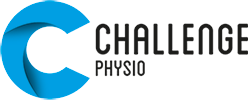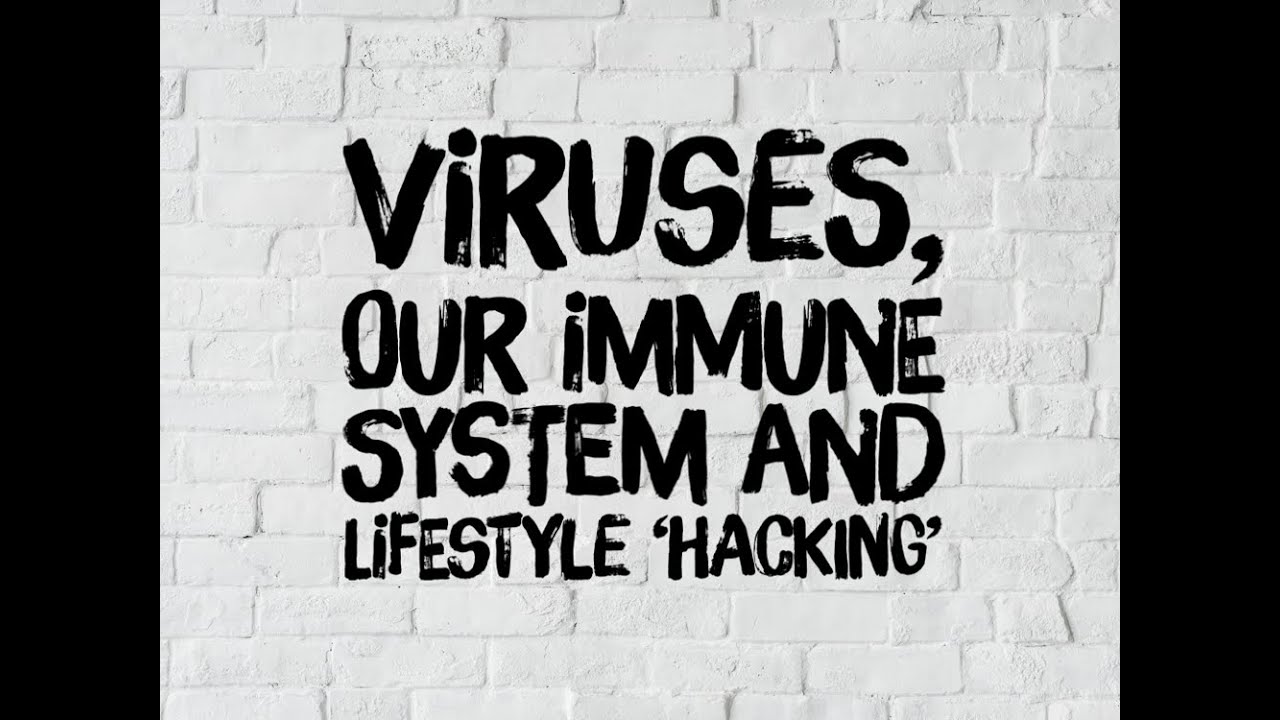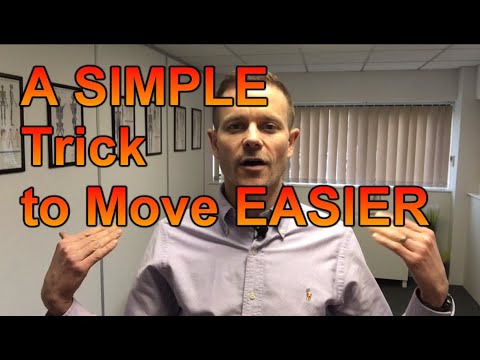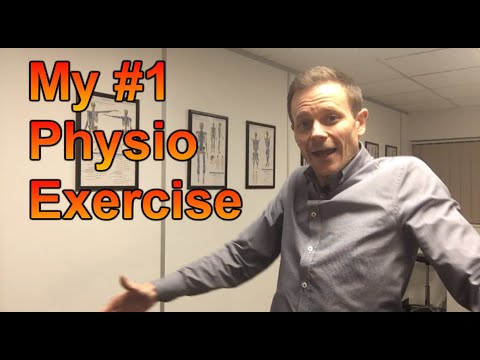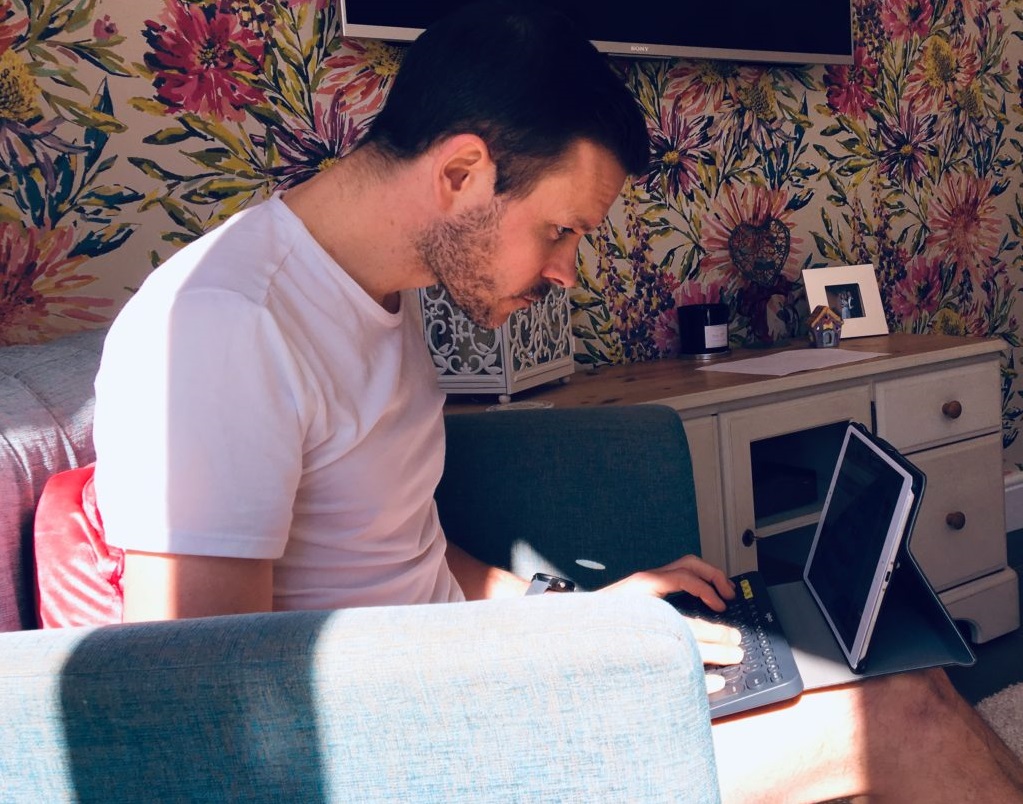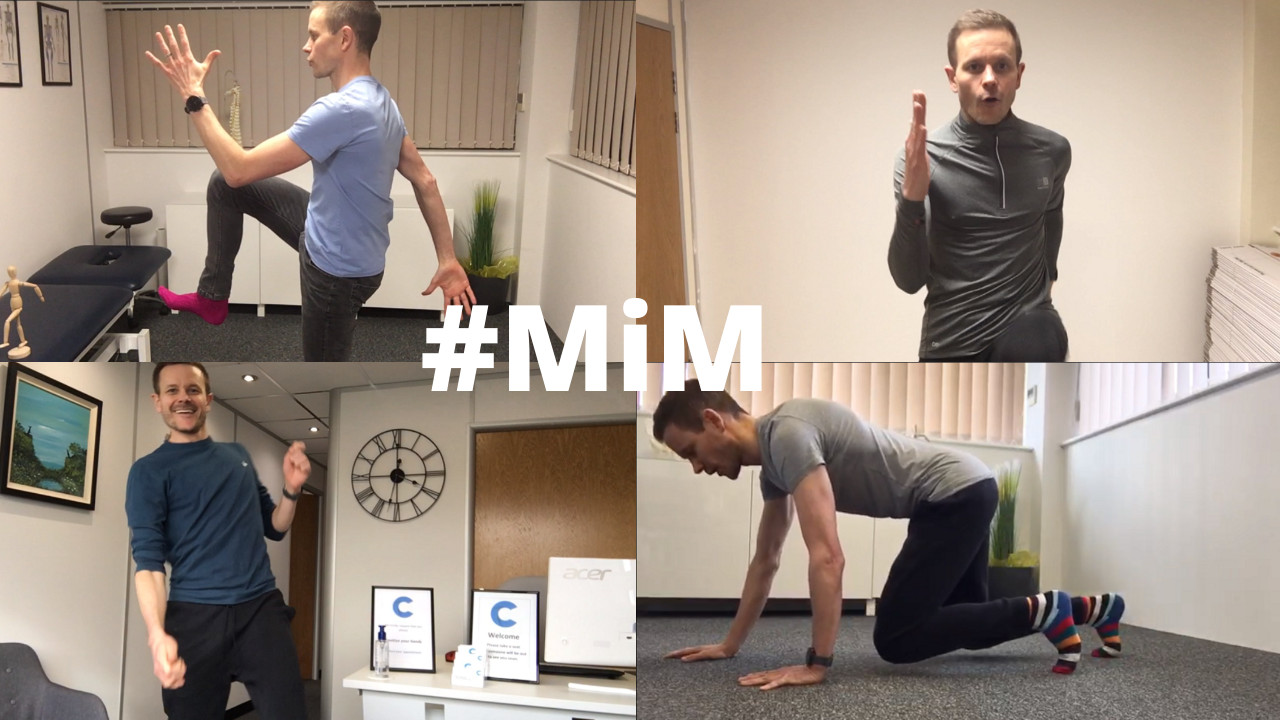These unprecedented times have led to unprecedented work environments. As the world attempts to ‘adapt’ to life in isolation, millions of workers have been forced to set-up office at home. For a minority of people this maybe the norm, they may already have an allocated room or space to work from, but for the large majority, the new ‘work from home’ (#wfh) approach is unchartered territory! Compounding this for all, we are now working in an environment that is shared with our beloved family! Kids, pets, partners and anything else of distraction, can all have a significant impact on your function, thinking and ultimately, your productivity! The aim of this article is to give you details of the ideal working from home set-up and to share with you some of the scenarios that a lot of us are facing right now, and perhaps more importantly, some really good tips to help you cope during this difficult time. The HSE, DSE & COVID-19 First the legal bit, and I’ll keep this as simple as I can .. primarily for my benefit! The Health and Safety Executive (HSE) state that; The employer has the same health & safety responsibilities for home workers as it does for any of its other workers. However, this is only applicable if the employee is likely to work from home on a long-term basis, whereby the risks of using office equipment must be controlled. If, on the other hand, the employee is temporarily working from home, it is labelled as no increased risk and employers are not obligated to complete home workstation assessments. Instead, the HSE recommends employers provide their employees with advice on completing their own basic assessment at home. Now, COVID-19 has effectively shoe-horned millions of workers into the category of ‘temporarily working from home’, and below, is a video from the HSE with basic Display Screen Equipment (DSE) advice and suggested modifications to make best use of the furniture around you. Although this is useful, the reality of the current home working environment is far from ideal. The current #WFH reality The reality of the COVID-19 situation for most of us resembles the following… we won’t; have ample space to set-up work from home, be able to sit ergonomically in front of a screen, have the same efficiency as achieved in our usual dedicated workplace, be as organised with our fuelling – drink and food, keep to structured ‘working’ hours Sadly, even with the best possible DSE set-up at home, our productivity is going to be significantly challenged by variables outside of our control, our; daily routine has been compromised colleague interaction has gone digital opportunity to vent frustration, discuss issues and ultimately deal with work stress has been suppressed precious and vital ‘me time’ has been stolen All of which makes us more vulnerable to emotional stress and the problems associated with it; anxiety, back pain, neck pain, sciatica, headaches, digestion problems and insomnia to name but a few! The ‘How to’ work from home during COVID-19 Human beings have an innate ability to adapt. Since the dawn of time we have had to alter the way we function, the way we use or mind and body, in order to survive from the environment we find ourselves in. Right now is no different. The UK government have ‘encouraged’ a self-isolation, stay at home strategy as a temporary measure to combat COVID-19. They hope this will only need to be for a few weeks, so long as everyone co-operates and the infection rate begins to decline. Unfortunately, the statistics from other countries who are further ahead in the battle against this pandemic, are highly suggestive that we may be in some form of lock down for a while longer yet. Realistically, we should accept that we are all ‘temporarily’ working from home for the foreseeable future! Now, as a Consultant Physiotherapist with a strong bias to a manual therapy approach, I thought my ability to work from home would be extremely limited! I decided to roll out the video consultation service to all, current clients and new. I’ve created an online video appointment option on the booking page of my website (Click HERE), and I anticipated a few patients would take me up on this offer. However, I underestimated how quickly this forced working from home scenario would have an impact on our bodies! In the last 2 weeks, the majority of online appointments I have had, have been in connection to pain and discomfort from an inadequate home work posture. Having listened to my on-line clients who frequently work from home, reading messages from clients who are suddenly working from home and talking it over with friends who are struggling to work from home, I figured the advice I gave them would be of benefit to all! I hope this helps… My ‘How to’ guide on working from home during COVID-19 – Top 10 Tips We are creatures of habit. Top of the list and for good reason. We function more efficiently and are more productive when we keep to a routine. Did you know that keeping to a routine can improve your willpower? Our willpower is like a muscle. The strength of our willpower is determined on how often we use it and how we allow it to repair. As our muscular strength weakens with repetitive use, our willpower fades with the more decisions we have to make. Keeping to a routine will reduce the number of unnecessary decisions you have to make in a given day. If your brain is trying to decide what to wear to work from home, where to sit to work, when to start, how to entertain the kids so you can work, when to have a break, how to digitally connect with your colleagues, etc … suddenly you are making far more decisions than ever before! Create a new COVID-19 routine. Make it simple by keeping as much of your old routine as you can. Try to get up, shower and have breakfast like any other work day. Consider continuing to dress like you are heading out to the office! You may even go as far as stepping outside the front door and getting into your car as if you are about to begin your commute! Take breaks from your work as well, just as you would’ve at the office, and aim to finish your day at the desk at the same time. All of this reduces the need for you to make decisions on basic day-to-day tasks, and ultimately, it affords you a stronger willpower to help overcome the heightened feelings of stress, suppress any cravings and allow you to make consistent progress on the things that are important to you. 2 – Steal your commute and BREATHE If you are developing a new routine, consider the time saved from not having to commute to and from work and try to exchange it for personal development. The most beneficial addition would be time allocated to consciously practicing a Breathing Exercise. Breath practice is often the most overlooked and underestimated form of exercise, but at this current moment in time, it should be an essential part of your day! Our breathing is THE most important function for sustaining life. We can go approximately 3 weeks without food, 3 days without water but only 3 minutes without oxygen. The muscles that we should use to breathe, primarily the diaphragm, are also crucial for holding good posture, providing the large majority of our core strength! Combine all this with the fact that COVID-19 seems to attack the respiratory system, maintaining strong, powerful and efficient breathing muscles should be a priority for all of us right now. A breathing exercise to try… Get into a comfortable posture – focusing on your breath is easier the more supported you are – in order of ease: lying down, sitting tall, standing, exercising. Think and feel for your waistline, lower abdominal region – this is where to channel your breathing Think of a ‘Slow & Low’ breath pattern Ideally in and out through your nose, but if this is awkward, start with mouth breathing BREATHE IN (4-5 secs) – Slow and Low – starting to fill the abdomen and working up the body – like filling a jug with water. HOLD the breath (7 secs) – trying to feel and focus your body is relaxed – especially the shoulders. BREATHE OUT (8 secs) – Slowly release the breath and continue to feel for the body ‘letting go’ Repeat this technique at least 5 times each set, and as many sets in a day as possible. As you become more competent with the technique, practice it a variety of postures and situations. Obviously, the saved commuting time could also be exchanged for a form of exercise that may also increase your breath awareness. There are now thousands of online exercise sessions to choose from and most of these are currently offered free of charge. Which form of exercise is best for me right now? When it comes to choosing the right exercise discipline for you, my advice is to always opt for something you know you will enjoy, over that which you believe or may have been told is better for you. If you don’t enjoy it, sooner or later you will find an excuse to not continue with it .. take away the decision making! 3 – Hydrate By now, you should all be aware of the importance of keeping your body suitably hydrated. The human adult body is made up of 60% water! Our vital organs, including the brain and heart are composed of 73% water and the lungs approximately 83% water! Frequent consumption of water throughout the day helps to ensure that our body functions in an optimum state. Our brain can process at a much better rate and our circulation flows much smoother around the body. With respect to COVID-19, a cold state virus, it is recommended that we consume warm to hot beverages more frequently than cold ones. Now whilst the appeal and craving for coffee and tea will no doubt jump right out to most of you, just be cautious of when you consume caffeinated drinks. It’s worth noting that the half-life of caffeine is approximately 5 hours, or to simplify, if you drink a tea or coffee at 10.00, it can take up until 20.00 for the caffeine to have completely left your system! To avoid impacting on the quality of your sleep and help reduce the busyness of your mind, try to avoid drinking any caffeinated drinks at least 6 hours before you would go to bed, and make sure to drink plenty of water. Opting for herbal tea, like lemon & ginger, in the afternoon is a good way to maintain warm beverage consumption whilst also suppressing any cold viruses. 4 – Circulation We are a series of moving parts designed to move. Like any other mechanical moving part, if we cease moving, we cease moving! So, make sure to keep as many of your joints moving as often as you can. Ensuring our circulation is as optimal as possible helps to maintain a healthy mind and resilient immune system. By keeping the ankles and feet moving you are effectively stimulating the body’s second heart. That’s right .. as far as your circulatory system is concerned, you have 2 pumps, the heart and the calves. The heart pumps blood out and around the body, and the calves are responsible for pumping it back. When you consider the amount of time we spend sitting, and more relevantly, sitting in an awkward home working position, you can appreciate the potential we have for accumulating toxins and waste in our system, drying out our joints, stiffening up our movement and disrupting our overall function. Circling the ankles, pointing and flexing the toes and frequently standing up to move about are all great ways to stimulate your circulation. When working from home, go to the furthest toilet from your work space. If you’re working from the dining table then head to the upstairs bathroom each time you need to go! 5 – Think on your feet Prolonged sitting and sedentary postures not only lead to an accumulation of toxins and other waste products in our calves, but we are also starving our brain of all the important nutrients it requires to function at an optimal level. So here’s a really easy and fascinating hack .. think / talk on your feet! You may already do this, but the common practice of pacing up and down whilst you are on the phone holds real scientific credit. Simply walking whilst talking will improve the circulation to your brain and therefore continue to fuel it with exactly what it requires. Are you expecting an intense ZOOM session with your colleagues? Then plan how you can be mobile at the same time! Get up on your feet and walk around as much as is feasibly possible, whilst you are talking. Even if that means walking on the spot or simply fidgeting on your feet .. improve your circulation and you’ll improve your cognitive processing (thinking)! 6 – Break for marching Schedule regular breaks from your work. Taking a break may come naturally when you are in the office, but being at home and having all the distractions that come with the territory often mean we lose track of time and in particular, a structured break. It’s vital to your overall health that you periodically leave the workplace behind and ‘down-regulate’, de-stress and momentarily switch-off. Plan a structured break and stick to it. Better still, when you have your break and you’re boiling the kettle for your warm drink, consider simply marching on the spot whilst the kettle boils. Marching on the spot is a fantastic way to mobilise the joints that stiffen up so quickly when we sit for long periods. Need inspiration? I recently ran a campaign throughout March, called March in March #MiM! You can find a huge variety of marching techniques on my YouTube channel … Find a technique that you can do and practice it every time you break, perhaps even when you boil the kettle. At least 1 minute of marching a day can have a significant positive effect! 7 – Hang out buddy Did you know that your ribcage is in fact the second most important shock absorber in your body! During weight-bearing, and after your ankle joints, your ribcage is responsible for absorbing the leftover forces that the body experiences as a result of our interaction with the outside world. Consider the ribcage to be more like a Spinal Spring than a solid, fixed cage type structure. If you acknowledge its capacity to absorb force, then you can respect the importance of maintaining its position and adaptability. Elevating your chest, optimising your breathing (think of the lungs like internal airbags pushing out from inside!) and stretching out your shoulder girdles (arms, collarbones & shoulder blades) can all help to maintain a more adaptable ribcage. For at least the last 8 years, as our dependence on technology has soared and our optimal posture been challenged, my exercise of choice for the large majority of clients has been to ask them to HANG! Find somewhere that is sturdy enough to take your weight, possibly a door frame, the top of an open door, a strong branch on a tree outside or like me, the open landing above your staircase! As often as you can, go to your hanging place, grab on and simply HANG OUT! Hanging practice… Try to hold the position, relaxing your body from your purchase point, feeling the ribcage open and the spine lengthen. Maintain this position for as long as you comfortably can, but don’t be fooled, this is way harder than you realise so be cautious where you try it! If the surface you are holding on to is high enough to take your feet off the floor then make sure you’re not too high and you can get out of position safely! If your feet still tough the floor, then try to relax into position by slowly bending your knees and taking more weight through your shoulders. As you improve your tolerance of this position you can challenge yourself further with longer holds or the addition of your Slow & Low breathing technique above! This break out exercise is AMAZING for relieving the compressive stress and tension created by prolonged sitting … ENJOY … responsibly* ! *Please note; practicing the hanging stretch exercise is at the individual’s own risk. Rob cannot be held responsible for any damage caused to property or person! However, if you manage to capture any incidents on video we will happily review them – for injury evaluation purposes only – obviously! 8 – SHOUT.. SHOUT.. Let it ALL OUT! If there’s one thing for sure, this COVID-19 pandemic has elevated all of our stress levels! Stress isn’t actually all that bad, so long as we process and relieve it in the right way. Some stress is actually good for us as it triggers the release of certain hormones that can fuel and motivate us to act, respond and behave in a certain way which could actually be of benefit. From a body function perspective, we receive ‘input’ from our 5 senses (sight, smell, hearing, touch and taste) but have only 3 systems to process a reaction. We rely on our chemical, mechanical and hormonal systems to manage our stressful stimuli. If we accumulate stress without regular release, it can start to backup on the systems and cause health problems including; elevated blood pressure, joint and muscle pain, mechanical dysfunction, chronic pain, anxiety, digestive issues, chronic disease With the loss of your commute, the lack of physical connection with your colleagues and the reduction of your quality ‘me time’, your body is more and more susceptible to the accumulation of emotional stress. The following are really simple ways to help manage your stress whilst in a confined space; Exercise – anyway, anywhere, anytime – exercise stimulates the release of endorphins which combat the stress hormones. Choose from an online Yoga, fitness, Pilates, meditation, etc, type class and find a quiet part of the house to exercise and improve your circulation – flush it all out! Breathe – frequently practicing the breathing technique above can also stimulate the release of endorphins and ‘down-regulate’ your systems. A simple guided meditation can help you to balance your emotions, de-clutter your brain and release the built up tension. If you want to take breathing exercises to the next level, then consider trying the technique developed by Dutchman, Wim Hoff. Wim’s ideology centres around the fact that we have all the tools at our disposal to balance out the chemistry our function body. By harnessing them in the right way and using our breathing more effectively, we can alleviate the large majority of ill-health related issues. To try this out, click HERE. Shout – if you need to vent, then make sure to vent. Keeping in all the anger and frustration is not healthy for us. Taking yourself somewhere even more isolated (the toilet, the garden, the car, etc), so not to worry the family, and just letting it all go with a good old SHOUT, as loud as you can, will work wonders for using the chemical and mechanical systems to reduce stress. I often recommend my clients shout out as loud as they can perhaps when alone in the car waiting at the traffic lights, particularly if I believe that their physical pain is from emotional strain. 9 – Journaling – jot down your busyness Fear and anxiety are natural feelings, particularly during unprecedented, stressful times like these. The storing of emotions, bottling them up and suppressing the stress can eventually lead to even greater health problems. Sometimes, it can all be too overwhelming and even the tactics listed above; exercise, breathing and shouting, just don’t hit the mark. When it feels like nothing can rid you of your negative thoughts, another good way to process your emotions is to keep a journal. By writing down your thoughts and feelings you can essentially transfer them out of your head and onto paper. The more visible you’re emotions are, the easier it becomes to plan how you are going to deal with them. Here are some great ways journaling can help you process your emotions; Write out your tasks for the next day, before you go to bed. Take the stress away of over thinking how much you have to do or thoughts that keep going round your head. Create an extremely easy to-do list – one that is definitely achievable. It could be as simple as; Get up and shower, Drink 1.5 litres of water and email 2 close friends. Research highlights that if we consistently complete our tasks, no matter how simple they are, we can re-learn the feeling of accomplishment and pride, which in turn, will help to reduce anxiety. Be Grateful – after writing out your worries, follow with; I am grateful for… … and write down a list of absolutely everything that ticks the box! It could be life, family, Netflix, Joe Wicks PE, ZOOM audio etc!! The feeling of gratitude gives your happiness hormones a much needed injection! Positive Affirmations – make a note also of how you WOULD LIKE to be feeling in the present day, for example; I am awesome, I am healthy, I can do anything I put my mind to Repeat these affirmations throughout the day and with time, your brain will re-wire to accept them as reality. 10 – Finish with FUNNY!! Laughter is THE best medicine! It is well documented that laughter is one of our best coping mechanisms. A coping mechanism is a strategy that we can use to help process stress and protect our emotional wellbeing. In pandemic times, regular laughter can help to ease your emotional and physical pain. Billions of people around the world are fearing for their financial future and health, and it’s extremely hard to stop these thoughts from becoming all consuming. Try to finish each day, work shift or family activity with something that makes you all laugh. Find a joke to tell, a comedy sketch to watch, a comical story to share or play a game with the family! Anything that makes you laugh out loud will help you and everyone else. Laughter is officially contagious – we have wonderful ‘mirror neurons’ in our brains that fire up when we observe something – if someone laughs and we witness it, our mirror neurons trigger us to laugh as well – clever stuff! Laughter fights depression – when we laugh we release our happy hormones, dopamine and neuropeptides which instantly improves our mood! Laughter boosts our immune system – research has demonstrated that the chemical and mechanical activity of laughing can increase the quantity of white blood cells in our system – helping to fight off infection! That’s it… So there you have it folks! My alternative ‘How to’ guide on working from home during these unprecedented times. Try to implement these, some, if not all, as soon as you can to help cope with the current situation. Try to remain POSITIVE! Throughout our existence on Earth, the human race has adapted to the ever-changing environment around us. We all have an innate ability to change and in doing so, we can continue to co-exist and remain mentally and physically healthy. Support one another, take care and be safe. More on the author.. Rob White is a Consultant Physiotherapist based in the Northeast of England specialising in the diagnosis, treatment and management of complex injuries and human dysfunction. Incorporating the broad range of training he has undertaken, Rob uses a holistic approach to help his clients understand their ailments before guiding them through the best possible management. He works with a diverse group of clients of all ages and abilities, helping them all to optimise their lifestyle. Working with Rob; Rob offers remote video consultations, which work great for advising clients on diagnoses, better posture, movement practice and for sign posting to other beneficial healthcare; He can prescribe bespoke video exercise programmes that will aid with pain relief and facilitate movement; Rob has direct access to a web of highly skilled medical colleagues that he can signpost you to in order to further improve your health and wellbeing. This service is fully digital and can be offered to anyone, anywhere in the world! Contact Rob by emailing: robert@challengephysio.com
